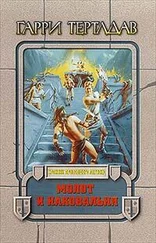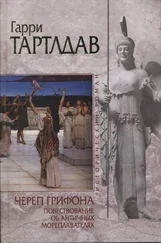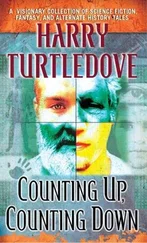Harry Turtledove
MANUSCRIPT TRADITION
Dr. Feyrouz Hanafusa glanced at the wall clock above the exit. In big red numerals, it told her the time was 7.08. In smaller numerals below, the clocked admitted it was also 1700. Conversion to decimal units had been under way for more than fifty years: since Feyrouz was a girl. It remained incomplete. The curator of the Beinecke expected it would still be incomplete in 2269—fifty years from now. For the really old-fashioned, still smaller characters called it 5:00 PMPM.
While she watched, it went from 5:00 to 5:01 and from 1700 to 1701. Less than half a thousandth later, 7.08 became 7.09. However you marked it, however you looked at it, it was quitting time.
As if to underscore that, the soft rumble of plastic wheels on industrial-strength carpeting announced that Tony Loquasto was making the last cleanup swing of his shift. The janitor took a hand off his rolling trash barrel and touched it to the edge of his tricorn. “G’night, Professor,” he said, as he did more evenings than not. He tried to time that last swing so he came to the door at the same time as the curator.
“Good night, Tony. See you in the morning.” Dr. Hanafusa smiled fondly at him. The Beinecke Rare Book & Manuscript Library had preserved such things at Yale since the middle of the twentieth century. Loquastos had been sweeping up there from at least the 2070s on. Tony claimed they’d been doing the job even longer, but the Great Data Smash of 2071 made that hard to prove.
She remembered seeing a Yale print yearbook from the 2080s. Vic Loquasto’d been the Beinecke’s head custodian then. He’d worn a bushy mustache and had a lot of curly hair sticking out from under his dumb-looking baseball cap. Such details aside, he looked a lot like his several-times-great-grandson.
Out into the muggy warmth of a July early evening she went. She smiled again. How fitting that even the Beinecke’s janitors had so much history behind them.
Thinking of history made her looked back at the building where she lived her professional life. It was built in the spare style that had been called modern architecture all those years ago. Five stories tall, it was shaped like a shoebox and resembled nothing so much as a gray-and-white waffle.
By now, several stylistic movements had come and gone since the Beinecke was modern. The swooping lines and translucent finish of the Tereshkova Xenobiology Hall across the quad were only half as passé as the Beinecke’s resolute rectangularity.
Except for the microbes of Mars and the odd oceanic creatures under Europa’s icy crust, xenobiology had been theoretical when the Tereshkova Hall went up. The swarm of people coming out of the building now showed how much it had grown in the past century and a quarter. Probes had found life on a planet of Tau Ceti and on another one revolving around Epsilon Eridani. Analyzing, comparing, and exploiting different biochemistries was as hot a field as computer graphics had been a couple of hundred years earlier.
And, odds were, it would be heating up still more. Nothing had gone wrong with the robot ship launched toward TRAPPIST-1 as the twenty-first century drew towards a close. Now it was sending data back to Earth. Or rather, now the data it had sent back to Earth forty years ago were starting to arrive.
TRAPPIST-1 was a piss-poor excuse for a star. An M8 dwarf, it was only a little bigger than Jupiter, though more than eighty times as massive. But even in the early twenty-first century they’d learned it had seven planets with at least the potential for life. That made it a most intriguing target for starships. It was an old star, billions of years older than the Sun. The life its planets bore—if indeed they bore any—would be older than Earth’s, too. As far back as the late twentieth century, David Gerrold had realized extra gigayears of evolution could mean corresponding extra sophistication.
A headline ten meters tall appeared in the air in front of Tereshkova Hall: CRAWLER LANDING ON FARADAY. Back in the day, TRAPPIST-1’s planets had borne letters from a to g . Now they were named, alphabetically still, after famous old scientists: Avicenna, Bohr, Curie, Dawes, Eratosthenes, Faraday, and Goodall. Their orbits, all close to their star, were full of complex resonances. The inner five always turned the same face toward TRAPPIST-1; Faraday and Goodall rotated three times for every two revolutions. A crawler had already come down in the libration ribbon between Dawes’s light and dark sides.
Feyrouz knew vaguely that getting the landers to good areas on those unimaginably distant worlds hadn’t been easy. Modern savants kept worrying that the primitive, slow, stupid computers on the starship weren’t up to the job. They seemed to have been wrong, though. The curator didn’t worry about the details, any more than a Victorian businessman in Salt Lake City worried about how the telegraph sent his message to Indianapolis.
Feyrouz walked to the edge of campus and waited for the bus to take her to her apartment building. Its electric motor as quiet as the inside of a library was supposed to be, the bus rolled up to the stop a few minutes later. Like so many industrial products these days, it was manufactured in the Brazilian Empire. The Naviopedra batteries that powered it were a Brazilian specialty; they held more power in less space and weight than any competitors.
Ten minutes later, she got off. The bus glided away. She went up one block and over two to reach her building. Her head was on a swivel while she did it. New Haven had always had its share of crime and maybe a little more. Cameras everywhere made robbers more likely to get caught. That didn’t stop a lot of them. And, if one of them clouted you in the pot so you wouldn’t hold on to your goodies, you might be too damaged afterwards to care.
No one bothered her on the way to the her apartment. The DNA sniffer at the security gate confirmed that she was entitled to go inside. The door sighed open. She went in. The door slid shut behind her.
Another DNA sniffer (a newer, better model, one she’d paid for herself) on her door agreed that she really did live in Unit 27. She walked inside. The door closed. The lights and the air-conditioning came on.
The cat walked out of the bedroom. His complaint-filled meows said she’d stayed away from him much too long, even if today was no different from any other day. “It’s all right, Wilfrid,” Feyrouz said. Wilfrid was unconvinced, as he was almost every evening. She scratched his chin, then sat down on the carpet beside him and petted him and rubbed his tummy while he did flop-and-rolls and purred like a boat with an internal-combustion engine.
She fed the tropical fish. It was a peaceable tank: cardinals and neons and danios and little rasboras and the like. A Corydoras catfish went along a side wall, nibbling on algae and keeping the view clear. Wilfrid batted at the fish he couldn’t reach. They were as much fun for him as a good immersive was for her.
Once the critters were taken care of, Feyrouz could tend to her own dinner. She took a tilapia-and-rice pack out of the freezer and stuck it into the microwave. The oven’s sensor registered the ration points when she touched the HEAT panel. She sighed. The authorities insisted things were getting better, but she remained convinced food packs had been more substantial when she was a kid.
As she waited for the microwave to finish, she glanced at the photo of her son on the little table. Sam was living his own life, homesteading and doing urban archaeology in the ruins of Sandusky, Ohio. Feyrouz wished he would call or vid more often, but what mother didn’t?
Читать дальше













